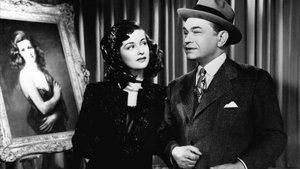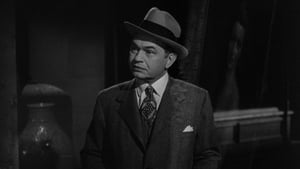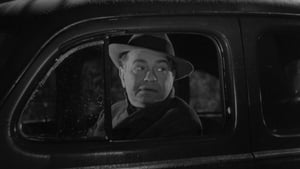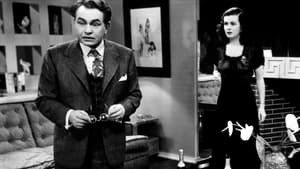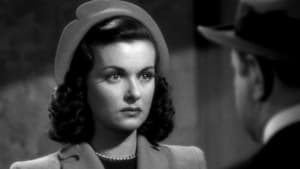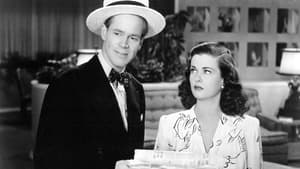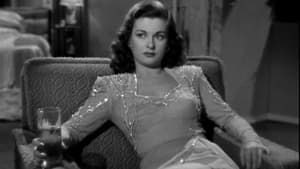Contact: [email protected]
Video Sources 0 Views

Synopsis
[ez-toc]




Introduction
In the mesmerizing world of classic cinema, few genres hold as much mystique and allure as film noir. Transporting us to a bygone era, these black-and-white gems captivate audiences with their shadowy visuals, intricate plots, and morally ambiguous characters. One such cinematic jewel is “The Woman in the Window Colorized” (1944), a film that not only stands as a testament to the noir genre’s brilliance but has now undergone a vibrant makeover in the form of a colorized version.
Read Media File Transfer Agreement: Terms and Conditions
Read FAQ
Brief Overview of “The Woman in the Window Colorized”
Directed by the legendary Fritz Lang, “The Woman in the Window Colorized” stars Edward G. Robinson as a mild-mannered professor ensnared in a web of deceit and intrigue. Joan Bennett plays the femme fatale, weaving a seductive spell that leads our protagonist down a dark and dangerous path. Raymond Massey adds a layer of mystery to the narrative, creating a film that has remained a classic in the annals of cinema history.
Significance of Reviving and Colorizing Old Films
The decision to colorize “The Woman in the Window Colorized” sparks an intriguing conversation about the preservation of cinematic history and the engagement of modern audiences. While purists may argue in favor of the original black-and-white presentation, the colorization process opens up new possibilities for reimagining these classics. It invites a younger generation to appreciate the artistry of films that might otherwise be dismissed as relics of the past.
Introducing the Film Noir Genre
To fully understand the impact of “The Woman in the Window Colorized,” it’s crucial to delve into the film noir genre itself. Film noir, meaning “black film” in French, emerged in the 1940s and 1950s, characterized by its dark themes, chiaroscuro lighting, and morally complex characters. These films often explore the underbelly of society, where crime, deception, and passion intertwine to create gripping narratives. “The Woman in the Window Colorized” serves as a timeless example of noir, with its intricate plot and compelling characters.
The Woman in the Window Colorized: A Timeless Example of Film Noir
Edward G. Robinson and Joan Bennett: Captivating Performances
Central to the success of “The Woman in the Window Colorized” are the stellar performances of Edward G. Robinson and Joan Bennett. Robinson, known for his roles in classic gangster films, takes on the role of the unsuspecting professor with finesse. His nuanced portrayal captures the descent from academic curiosity to a web of moral ambiguity. Bennett, the epitome of the femme fatale, weaves a spellbinding performance that keeps viewers on the edge of their seats.
Raymond Massey’s Enigmatic Role
Raymond Massey, often praised for his versatility, adds an enigmatic layer to the film. His character becomes a pivotal force in the professor’s unraveling world, contributing to the intricate web of suspense. Massey’s subtle yet impactful performance showcases the depth of talent in the film.
Fritz Lang’s Directorial Mastery
Fritz Lang, a master of noir himself, infuses the film with his distinctive directorial style. The use of shadows, unconventional camera angles, and suspenseful pacing all contribute to the noir atmosphere. Lang’s influence is not just seen in the narrative but also felt in the visual language of the film, making “The Woman in the Window Colorized” a cinematic triumph.
The Significance of Colorization in Revitalizing Classic Movies
Understanding the Color Restoration Process
The decision to colorize a classic film involves a meticulous process of color restoration. Technological advancements now allow for the enhancement of these films without compromising their original essence. The goal is not to erase the black-and-white charm but to breathe new life into the visuals, offering a fresh perspective to contemporary audiences.
Reasons Behind Choosing to Colorize “The Woman in the Window Colorized”
Colorization serves as a bridge between the past and present, making classic films more accessible to modern viewers. “The Woman in the Window Colorized” undergoes a vibrant makeover, with the hues carefully selected to complement the noir aesthetic. This adaptation aims to preserve the film’s integrity while catering to a diverse audience, inviting them to experience the magic of classic cinema in a new light.
Pros and Cons of Colorizing Vintage Cinema
Benefits of Colorization for Enhancing Viewer Experience
Colorization brings a vibrant makeover to classic films, making them visually appealing to a wider audience. The added layer of color can enhance the emotional impact of scenes, providing a fresh perspective on the narrative. For younger viewers, colorization can act as a gateway, bridging the gap between the past and present.
Vibrant Makeover or Sacrilege? Drawbacks of Color Enhancement
While colorization opens up new avenues for appreciation, purists argue that it might dilute the original vision of filmmakers. The stark contrasts and shadows inherent in black-and-white cinema contribute significantly to the noir aesthetic. Some fear that introducing color could alter the intended mood and atmosphere, detracting from the authenticity of the film.
Analyzing Visual and Narrative Changes in the Colorized Release
Comparing Colorized and Original Versions
To assess the effectiveness of colorization in “The Woman in the Window Colorized,” a comparative analysis with the original black-and-white version is imperative. The colorized edition introduces a vibrant palette, transforming the film’s visual landscape. A parallel examination with another Fritz Lang-directed film, “Scarlet Street,” provides insights into how color enhances or alters the storytelling dynamics.
Scarlet Street: A Comparative Study
By comparing “The Woman in the Window Colorized” with “Scarlet Street,” another noir masterpiece by Lang, we can gauge the impact of colorization on the director’s body of work. Analyzing both films side by side allows us to appreciate the director’s stylistic choices and evaluate the success of colorization in maintaining the intended aesthetics and mood of the original.
Reception, Rediscovery, and the Enduring Legacy of a Noir Masterpiece
Reviews and User Ratings
“The Woman in the Window” has enjoyed a robust critical reception over the years. Both contemporary and retrospective assessments highlight the film’s narrative complexity, stellar performances, and Fritz Lang’s directorial prowess. User reviews and ratings on modern platforms provide a glimpse into how the colorized version is perceived by today’s audience, offering a nuanced understanding of its impact.
Film Noir Trivia: Influence and Legacy
Exploring the film’s influence on subsequent noir productions reveals its enduring legacy. “The Woman in the Window” paved the way for the evolution of film noir, influencing directors and shaping the genre’s trajectory. Trivia about the making of the film, anecdotes from the set, and the creative minds behind its success add layers to the audience’s appreciation of this cinematic gem.
Preserving Classic Cinema: The Role of Restorations and Adaptations
Revival of Old Films: Balancing Preservation and Adaptation
The ongoing debate surrounding the preservation of classic cinema hinges on finding a delicate balance between honoring the original artistic vision and adapting to modern sensibilities. Efforts to revive old films through restorations and adaptations play a crucial role in introducing timeless masterpieces to new generations.
Conclusion
In the ever-evolving landscape of cinema, the colorized version of “The Woman in the Window” emerges as a vibrant testament to the timelessness of film noir. As we navigate the pros and cons of colorizing vintage cinema, it becomes evident that this adaptation serves as a bridge, connecting the past with the present. Encouraging audiences to explore both the original black-and-white version and the colorized release is not just an invitation to witness a vibrant makeover but a celebration of the enduring artistry embedded in classics like “The Woman in the Window.” The ongoing debate surrounding colorization only adds to the rich tapestry of film history, ensuring that these cinematic treasures continue to captivate audiences for generations to come.
